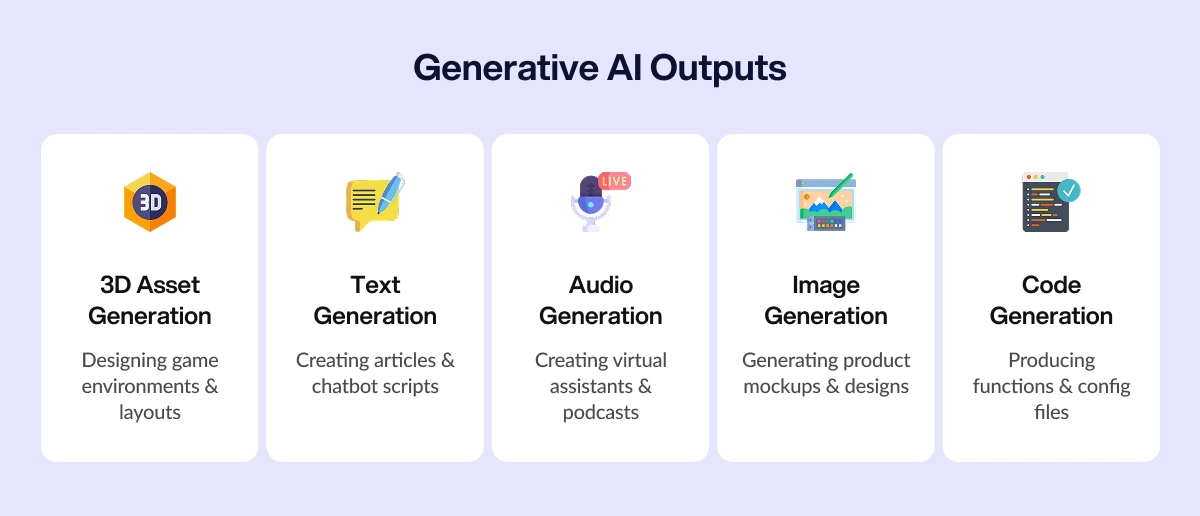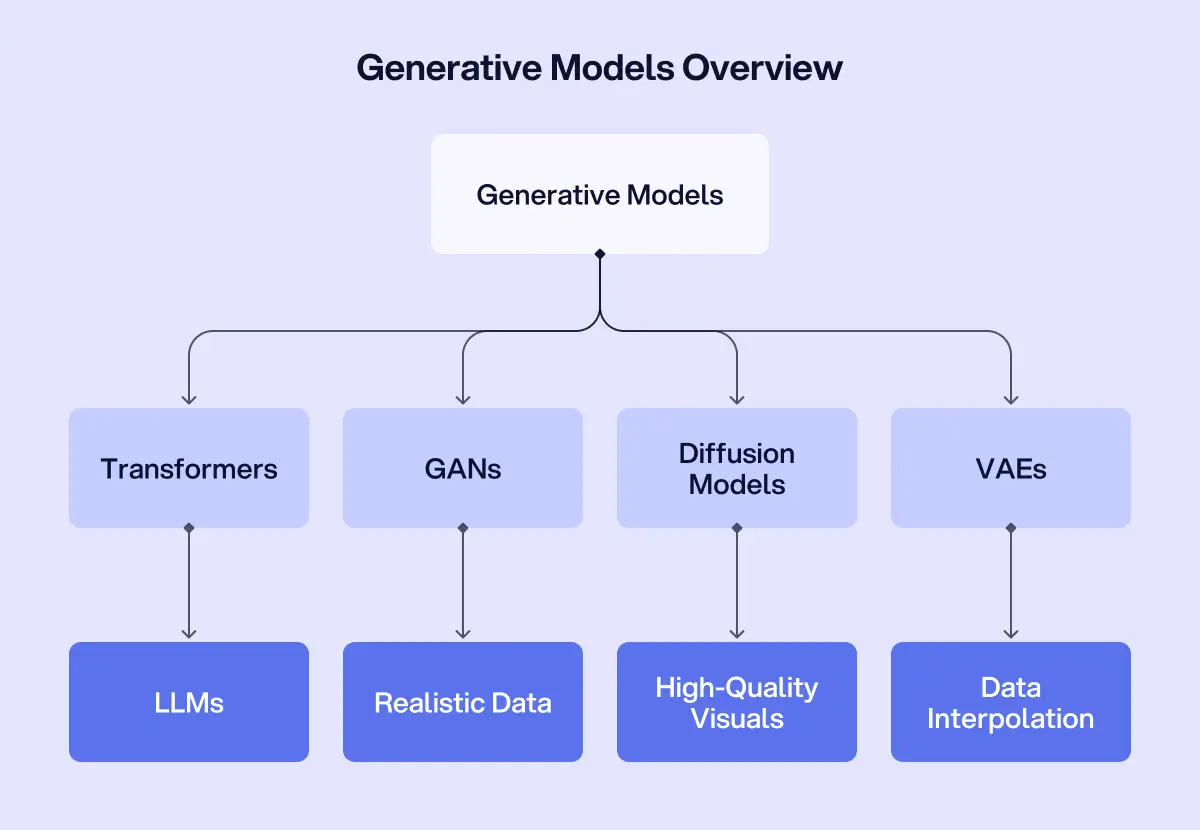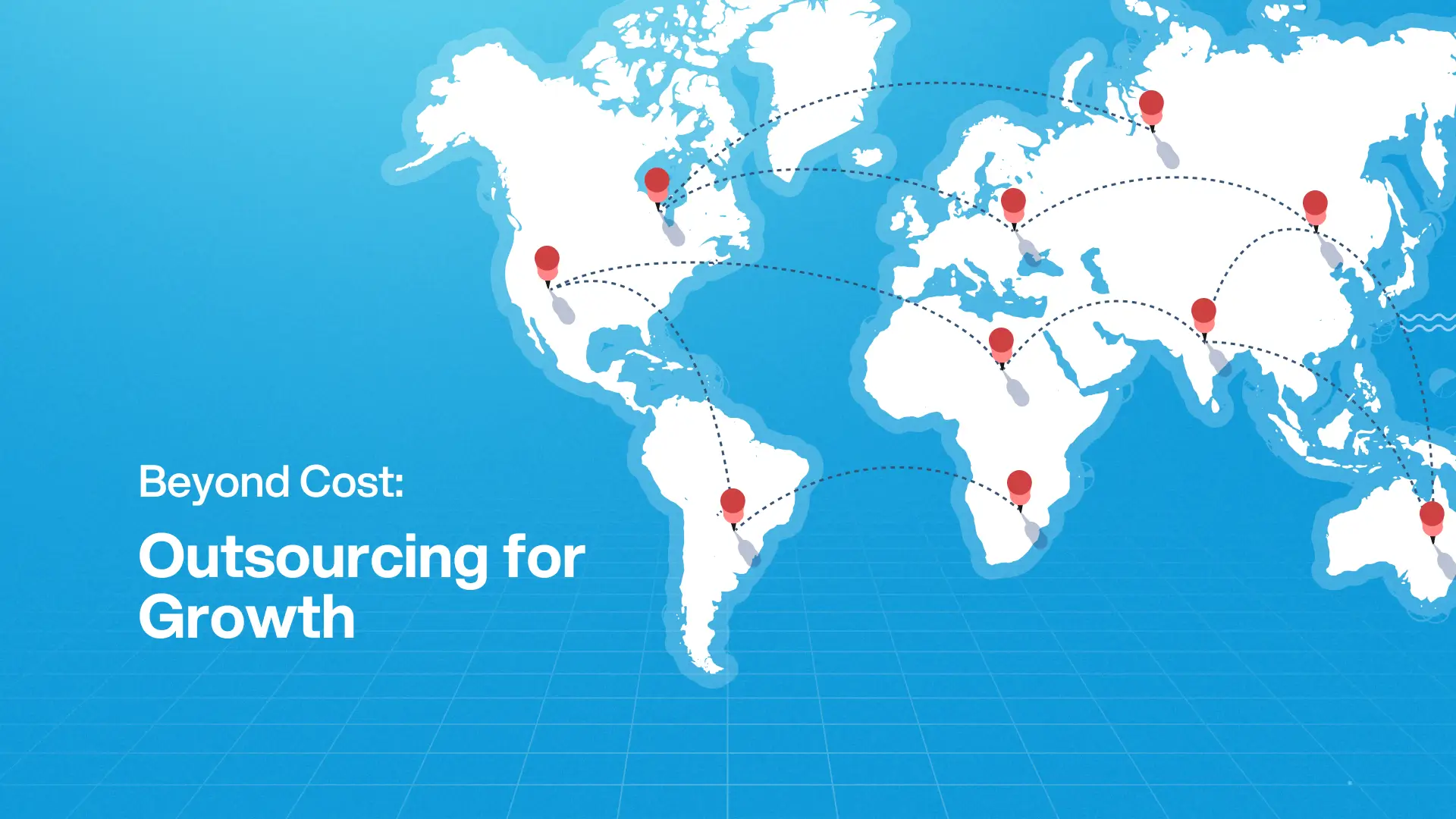Post Activity
 321
321
Table of Content
Share This Post
Table of Content
Generative AI (GenAI) is the engine behind the next wave of automated creation, hyper-personalization, and intelligent software design. For technical leaders, understanding how generative AI development works under the hood is critical, not just for planning your roadmap, but for deciding where to invest, when to build in-house, and when to outsource.
Let’s look at what generative AI development is, how it works, how to build it, and what it can do for your product, your customers, and your bottom line.
What Is Generative AI?
Generative AI is a subset of artificial intelligence that focuses on creating rather than just classifying. Under the hood, it’s about training deep learning models (primarily transformer-based neural networks) on massive datasets, and then fine-tuning them to generate new data that mimics the underlying structure of the training data.
What Can Generative AI Actually Produce?
Generative AI is powerful and versatile. Here’s a quick snapshot of what generative AI can create across different modalities:

As the ecosystem matures, we are seeing these outputs integrated into real-world applications. Some examples are AI content assistants, generative design tools, automated data pipelines, and synthetic media engines. The key is matching the right generative AI model architecture to the type of content and aligning it with your product’s goals, customer needs, and infrastructure realities.
What Is a Generative AI Model?
A generative AI model is a type of machine learning model designed to produce original content. Its job is to learn the structure, patterns, and probability distributions of its training data and generate outputs that feel convincingly real or human-made. These are probabilistic creative content systems that construct everything from text to audio.
Different Types of Generative Models

Transformers
Used in language models like GPT-4, Claude, and LLaMA, transformer-based models are the go-to architecture for generating sequential data such as natural language, code generation, or even music. Their self-attention mechanism allows them to maintain long-range dependencies and model context at scale, token by token.
Generative Adversarial Networks (GANs)
In a GAN, two models, the generator and discriminator, engage in a constant adversarial loop. The generator tries to create data that looks real; the discriminator tries to catch the fakes. The result? Highly realistic images or audio generation.
Diffusion Models
These models generate images by learning to reverse a noise process. Once trained, they start from pure noise and refine it step by step into a coherent, high-quality visual. Tools like Stable Diffusion, Google Gemini, and Midjourney are diffusion models.
Thinking of Outsourcing?
Access a wide range of outsourcing companies and find your best fit.
Variational Autoencoders (VAEs)
These models encode input data into a compressed latent space and decode it back into a close approximation. Great for reconstructive or style-transfer generation. They’re useful for anomaly detection, image denoising, or interpolating between data points.
Unimodal vs. Multimodal Models
Generative models can be classified by architecture and by modality.
Unimodal Generative Models specialize in a single type of data, like text (GPT), image (StyleGAN), or audio (WaveNet). They excel when your use case is focused, data is narrow, and the product delivers one core generative capability.
Multimodal Generative Models can process and generate multiple types of data simultaneously. E.g., text + image (e.g., GPT-4o, Google Cloud’s Gemini), or video + audio.
How Does Generative AI Work?

At the core, generative AI technology learns data distributions and samples from them to produce outputs. The training process generally looks like this:
- Training Phase: Feed the model gigabytes or terabytes of high-quality data. The model encodes the latent representations using neural network techniques.
- Optimization: Backpropagation fine-tunes weights based on loss functions like cross-entropy, KL divergence, or adversarial loss.
- Inference: Given a prompt, the model generates a sample by calculating token-by-token (or pixel-by-pixel) probabilities and choosing the most likely path, or introducing controlled randomness via temperature or top-k sampling.
What Programming Language Powers It All?
If you’re not building in Python, you’re probably not building generative AI. Python is the lingua franca of machine learning for the following reasons:
- PyTorch and TensorFlow dominate the deep learning space.
- Transformers by Hugging Face makes loading pre-trained models nearly plug-and-play.
- Jupyter notebooks, NumPy, Pandas, and Matplotlib cover preprocessing, data analysis, and visualization.
At the infrastructure level, you’re also likely working with:
- CUDA (C++) for GPU acceleration.
- ONNX for model performance portability.
- Rust or Go for lightweight, high-performance inference engines in production.
Will Generative AI Replace Developers?
In short: No. But it will definitely change what developers do.
Expect a future where:
- AI writes boilerplate, tests, and documentation.
- Developers handle architecture, debugging, ethics, and intellectual property.
- AI augments junior-level tasks, freeing senior devs to tackle complex tasks.
Think of GenAI as your next-gen dev intern: lightning-fast, but needing human intervention and supervision.
How Do Generative Models Differ from Traditional AI Models?
How to Develop Generative AI Models (End-to-End)
Building a generative model is a full-stack, deep learning technique-based project. It requires careful planning across all stages:

Define the Use Case
Your model architecture depends on the type of content you want to generate, such as text, images, code, or audio. For example, language models are ideal for content creation and chat interfaces, while diffusion models like Stable Diffusion excel at image generation. Clarifying your goal up front keeps the project aligned with business value.
Gather the Right Data
Quality data is non-negotiable. Whether it’s documents, code repositories, or medical images, your model’s intelligence depends on well-labeled, high-quality data. In niche domains, synthetic data can help fill critical gaps.
Select Your Framework
There are dozens of generative AI tools available. For example, Hugging Face Transformers, NVIDIA NeMo, or Google Cloud Vertex AI are each suited to different tasks. Your team or vendor should align tool selection with your infrastructure and skillsets.
Train the Model
Training a foundation model or fine-tuning a pre-trained model involves GPU resources, time, and tuning for performance. Output evaluation is critical and often requires human intervention to validate quality.
Evaluate Outputs
Once your generative AI model is validated, it must be deployed securely and efficiently, integrated with your product, and ready to serve users. Consider cloud-native deployment, auto-scaling, and pipelines that support user feedback for continuous improvement.
Monitor and Retrain
Over time, data changes, and so do user needs. Periodic updates to your machine learning model ensure it stays relevant and aligned with evolving expectations, especially in customer-facing applications.
Ready to Build Your Team?
Let’s create together, innovate together, and achieve excellence together. Your vision, our team – the perfect match awaits.
Real World Applications
Generative AI is already delivering measurable value across industries, transforming how teams create, analyze, and personalize at scale. Here’s a fast-moving tour of where it’s making the biggest impact:
Healthcare
Use case: Clinical summarization, generating synthetic medical images, and supporting diagnostics.
Case Study: A comprehensive review published by Cornell University highlighted the use of generative models like GANs, VAEs, and diffusion models to synthesize diverse medical data types, including imaging modalities such as dermoscopic, mammographic, ultrasound, CT, MRI, and X-ray. This approach aids in training diagnostic models without compromising patient privacy.
Result: Enhanced diagnostic support, reduced clinician workload, and faster decision-making processes.
Finance
Use case: Auto-generated reports, forecasting, and impact assessment.
Case Study: Financial institutions have leveraged generative AI to improve decision-making processes, customer experiences, and risk management. For instance, Deloitte’s FinanceAI™ Dossier discusses how generative AI can produce initial accounting reports and anticipate the impact of journal entries, streamlining financial operations.
Result: Accelerated analysis, lower reporting overhead, and better risk visibility.
E-commerce
Use case: Personalized experiences, product copy generation, and graphic design assets.
Case Study: Amarra, a global distributor of special-occasion gowns, integrated AI to write product descriptions, reducing content creation time by 60%. Additionally, their AI-powered inventory management system decreased overstocking by 40%, showcasing significant operational improvements.
Result: Higher conversions, faster creative cycles, and scalable personalization.
Entertainment & Gaming
Use case: Character creation, level design, dialogue scripting.
Case Study: Epic Games introduced an AI-powered Darth Vader character in Fortnite, featuring conversational AI and the voice of the late James Earl Jones. This immersive experience demonstrated the potential of generative AI in creating dynamic and responsive gaming characters.
Result: Leaner production pipelines and more dynamic user experiences.
Product Design
Use case: UI mockups, ideation support, creative writing prompts.
Case Study: Design tools like Figma have integrated generative AI plugins, enabling designers to generate copy, icons, and illustrations directly within their design frames. This integration accelerates the design process and enhances creativity.
Result: Faster prototyping, enhanced creativity, and more efficient design sprints.
Final Thoughts
Generative AI is not just a back-end tool. It’s a frontline differentiator. It compresses timelines, augments your workforce, and introduces cutting-edge technology to everyday workflows. The future of AI-generated content is here. The right foundation models will ensure that you are ready to turn ideas into outcomes faster than ever.
Find Your Perfect Software Outsourcing Partner
Unlock a world of trusted software outsourcing companies and elevate your business operations seamlessly.






